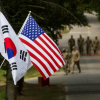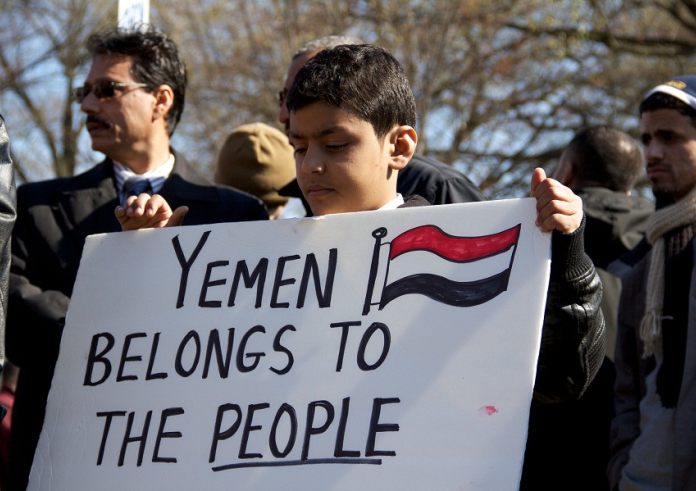By Amir Hamed Azad, Middle East Expert
Arrangements in Iraq and Syria
During the Trump presidency after the peace agreement with the Taliban on February 29, 2020, the United States pledged to withdraw all coalition forces, including non-diplomatic personnel, military contractors, teachers, advisers, and support forces, within 14 months of the agreement being signed (May 1, 2021). This decision was implemented with a slight delay during Biden's presidency, and US forces finally left Afghanistan on August 31, 2021.
As the United States withdrew, the Afghan government collapsed and the Taliban took control of the capital. This trend has drawn sharp criticism over US President Joseph Biden, while also raising concerns among US allies in Iraq and Syria.
This concern was particularly stated from the Syrian Democratic Forces, as they faced the threat of a Turkish ground attack on the one hand, and on the other hand, if the Syrian government returns to the northeast of the country, they face the threat over their democratic self-government. In addition, 11,000 ISIL fighters, along with 64,000 members of their families, are being held in the Al-Hul and Rouj camps, which are being protected by the Syrian Democratic Forces, and will become a growing threat if anarchy emerges.
The United States has been deploying force reduction plan in Afghanistan, Iraq, and Syria since 2017, and the Department of Defense's Human Resources Information Center has not released details of Pentagon manpower in Iraq, Syria, and Afghanistan since December 2017. The Pentagon has been on a temporary mission to the three countries since then.

The decision was based on the 21st Century Defense Priorities Strategy to maintain US Leadership, announced by Barack Obama on January 5, 2012. The most important part of this strategy was the need for the United States to refrain from engaging in large-scale, long-term stabilization operations.
The US Department of Defense's Office of the Inspector General reported to Congress, that in the first quarter of 2018, the United States was withdrawing US troops and equipment from Iraq, but Iraqi officials were worry about their inability in areas such as intelligence, training and desert war. Also, on December 19, 2018, the US government announced the beginning of the process of returning all US troops from Syria.
According to the announced plan, the United States began to reduce the power of the forces in Iraq and Syria. According to this, as of January 16, 2019, out of 9,123 US troops in Iraq, 6,000 remained in the country, and as of December 5, 2019, out of 1,323 US troops in Syria, 600 continued to serve. In 2021, the US Department of Defense authorized the US Army to deploy 2,663 troops used in a possible overseas operation for a temporary mission (less than 365 days) in Iraq and Syria.
These forces travel between Iraq and Syria on a variable basis, and according to the latest official announcement of the Pentagon, less than a thousand of these forces remained in Syria and by subtracting their number from the total number of officers, the number of the forces present in Iraq in 2021 will reach about 1700 people. Meanwhile, on July 26, 2021, at the end of the fourth round of strategic talks with the Iraqi government, the United States announced that it would end its military presence in Iraq by the end of 2021.
According to the process, there is objective evidence that the United States has implemented a de-escalation program in Iraq and Syria in parallel with Afghanistan, but additional objective evidence indicates that the US program in Iraq and Syria is fundamentally different from Afghanistan. Proof of this claim requires a brief review of US military strategy and program in Iraq and Syria.

US strategy in Iraq
The United States has had a clear strategy for Iraq since November 2005 that has remained unchanged until Biden's presidency, with the exception of a minor revision in 2007. The US National Security Council first formulated and announced the US strategy for Iraq in November 2005.
The title of this strategy, which remained unchanged after that, was "Victory in Iraq", which was defined for three periods of short-term, medium-term and long-term. According to this strategy, the United States expected Iraq to become a full-fledged partner in the global war on terrorism in the long run.
Accordingly, on November 17, 2008, the United States and Iraq signed an agreement called the Strategic Framework, the third part of which stated that the two sides would continue to work closely together on defense and security arrangements.
Accordingly, after the fall of Mosul, Hoshyar Zebari, the Minister of Foreign Affairs of the government of Nouri al-Maliki, wrote a letter to the UN Security Council on July 25, 2014, explaining the situation in the country and asking it and other countries to help fight ISIS.
The Nouri al-Maliki government's request led to the formation of an inherently determined coalition with the US command to fight ISIS, and as a result, US forces began a gradual return to Iraq based on this request and under the 2008 Strategic Framework Agreement.
During the formation of the coalition, the Iraqi parliament also considered a plan to cooperate with NATO, and on May 12, 2014, ratified the agreement with the North Atlantic Treaty Organization in the form of Law No. 29. Therefore, after the start of the gradual withdrawal from Iraq, the United States sought to delegate tasks and powers to NATO in 2018 in order to allay the concerns of Iraqi officials . Accordingly, NATO's mission in Iraq was defined as non-combat, and it was decided that NATO forces would not participate in operations alongside Iraqi forces. Obviously, part of NATO's forces in Iraq will be US forces.
| Reference | Date | Process |
| Pentagon Manpower | December 2017 | Announcing the temporary suspension of military missions in the three countries of Iraq, Syria and Afghanistan |
| US Secretary of Defense James Mattis | January 2018 | Sending a request to increase NATO training and consulting activities with the aim of turning it into a mission in Iraq |
| The Iraqi Government and The Coalition | February 2018 | Official request from the government to launch a NATO training mission in Iraq |
| U.S. Defence Ministry | April 2018 | Announcing a plan to build self- sustaining in Iraqi forces and withdraw troops and equipment from the country |
| NATO | April 2018 | NATO announces acceptance of request for new mission in Iraq |
| NATO | June 2018 | Approving the mission operations plan in Iraq |
| U.S. Defence Ministry | July 2018 | Re-emphasis on changing performance in Iraq (downsizing and focusing on training) |
US Interests in Syria
Unlike in Iraq, the United States does not have a codified strategy in Syria. After the formation of the Coalition, citing the Syrian government's inability to attack ISIS and the right of the United States for self-defense, US started attacks against ISIS in Syria. Samantha Power, US Representative to the United Nations, on September 23, 2014, citing Annexes (S / 2014/691) and (S / 2014/440) that focused on the Iraqi Government's official assistance form the Security Council and other countries in the fight against ISIS, she noted the Syrian regime's inability to effectively fight ISIS and the group's safe havens, and said the United States was launching attacks against ISIS and the Khorasan (al-Qaeda) group in Syria, which are threatening US interests around the world.
Despite the lack of strategy, then-US Secretary of State Rex Tillerson in the Trump administration, on January 18, 2018, outlined the US vision for Syria in five areas:
• Sustained defeat of ISIS and al-Qaeda in Syria;
• Resolving the conflict between the Syrian people and the Assad regime through the political process prescribed in UN Resolution 2254 and creating a stable and unified Syria in the post-Assad period;
• Reducing Iran's influence in Syria; Ending Iran's plan for the northern axis and protecting the security of Syria's neighbors (Israel) from all Iranian threats;
• Return of refugees and asylum seekers;
• Clearing Syria of weapons of mass destruction
The United States also appears to have adhered to the Trump administration's preferences for Syria during Biden's presidency. In the fiscal year 2021, the Trump administration's Department of Defense announced to the US Congress that it intends to retain 9,800 troops within the framework of the Syrian Democratic Forces to protect 17,000 square kilometers in four sections. On June 25, 2021, US Deputy Secretary of State for Near East Affairs Joey Hood announced that the United States would maintain a limited military presence in northeastern Syria to work with the Syrian Democratic Forces to defeat ISIS and stabilize the liberated areas.
Conclusion
The US withdrawal from Afghanistan and the reduction of troops in Iraq and Syria can be analyzed within the framework of a clear and unified strategy, but they have different arrangements. The location of Iraq and Syria in West Asia has placed the two countries along a disputed geography that allows land connections to the northern borders of the occupied territories. The Islamic Republic of Iran in the context of ideological enmity with Israel after the collapse of the Ba'athist regime in Iraq and the start of the civil war in Syria is constantly strengthening the military mechanisms in these two countries that may be exploited in the context of threatening Israel's national security.
Thus, based on the text of the defense strategy for the 21st century, the United States has put deterrence against Iran and its allies on the agenda by using mechanisms of Anti-Access and Area Denial (A2/AD) from the region. Accordingly, a set of measures to prevent Iran from entering the operational environment is defined, and if the first phase fails, preventive measures against the development of the initial deployment lines (initial lodgment) will be on the agenda.

Therefore, it seems that the United States, unlike Afghanistan, in Iraq and Syria will need to maintain a level of military force that will continue to operate within the framework of military advisers in the form of alliances and NATO. It is clear that the United States will pursue full deterrence against Iran by strengthening its reliable partners which will consist of a set of established governments, non-governmental actors and foreign beneficiary governments.
This opinion was submitted to ‘That’s Enough’ website by the writer

















